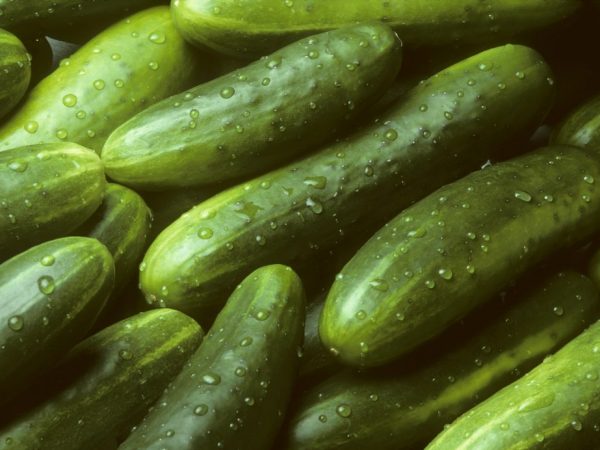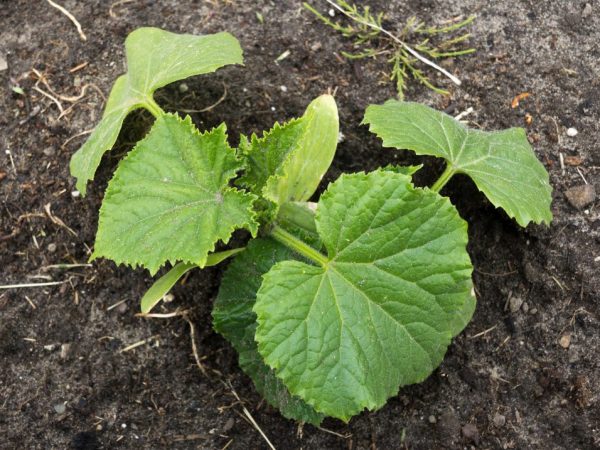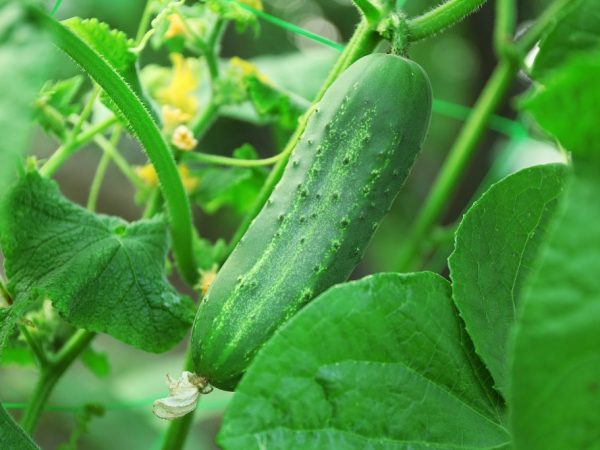Characteristics of Esaul cucumbers
Cucumber is the main vegetable in the garden. Unpretentious, easy to clean. Gardeners note that the Esaul cucumber variety is an excellent choice for gherkin lovers.

Characteristics of Esaul cucumbers
The f1 hybrid has good taste. Can be consumed fresh. Often used for conservation. Despite its small size, the yield is high.
Characteristics of the variety
Esaul cucumbers are a bunchy hybrid of the gherkin type. It is characterized by the presence of a partial parthenocarp, that is, the fruits are tied without pollination. Cultivated outdoors. Can be grown in sand greenhouses.
According to the description on the packaging, cucumbers of this variety are resistant to the following indicators:
- temperature drops;
- waterlogging or overdrying of the earth;
- night frosts;
- exposure to pests;
- diseases.
Enters fruiting quickly enough - 45-50 days after the first shoots. Planting is carried out after the frost has receded. Planting density is 3-5 bushes per 1 m2.
Description of the bush
According to the description of the variety, the bush has a bouquet type of ovary. The flowering of cucumbers is female. One node can have 10-12 flowers.
Up to 15 gherkins can be harvested from one bush. The yield per 1 m2 is 10-15 kg. The waviness of the leaves is small. Their size is medium. The color is bright green.
Description of fruits
Gherkin type fruits. Small size - up to 10 cm in length. The average weight of the fruit is 80-100 grams, not more.
Description of fruits:
- dark green color;
- smooth cylindrical shape;
- small tuberous;
- white-thorn;
- dense and crispy skin.
The main feature is excellent taste. There is no bitterness, which is why cucumbers have a sweet taste. Not too watery in texture. Perfect for conservation. Can be a salad ingredient or a sliced garnish.
Remember, you need to harvest the fruits at least once every 3 days. In case of drought - once a week.
Care

The plant needs to be looked after
In the cultivation of cucumbers, not only planting is important, but also care. Must be properly organized and regular.
Garden bed preparation
Initially, you need to prepare the bed. Add a mixture of 10 kg of compost and 2 tbsp. spoons of mineral fertilizer per 1 m2. This will improve the quality of the soil. At the same time, the seeds are treated with a manganese solution.
A day before planting seedlings, the soil is watered abundantly with warm water. Do the same with seedlings 2 hours before transplanting.
Temperature and humidity
It is important to observe the correct temperature regime. The optimum value is 22-25 ° C. During disembarkation, it should not be less than 22 ° C.
During the flowering period, 26-28 ° C is sufficient. The air humidity indicator should not fall below 90%.
Tying
Tying is an important procedure. Algorithm of actions:
- The lashes must be tied to the trellis - a lattice-like structure that supports the plant.
- It is necessary to stretch 2 wires at a height of 1.5-2 m. Observe a distance of 30-35 cm.
- Twine is tied to the wire - a twisted thread. It is attached under the first, upper leaves.Any node can be used. A free loop is best.
- The main rule is that one plant is tied up with one wire. It is important to leave 15-20 cm of loose rope. As the plants grow, the garter is loosened.
- The twine around the cucumber bush is wrapped only clockwise.
When 3-5 leaves appear and 1-2 bunches of cucumbers, pinch the top. After that, the branches from the bushes will not break, but will actively grow.
Pruning
Do not forget to care for the bushes throughout the growing season. Be sure to remove the flowers and shoots in the axils of the first 2-3 leaves. Then cut the side shoots down to the trellis.
Do not forget to leave 2 shoots with strings. Pinch them at the top over the second sheet. It is important to harvest the maximum yield from the main stem.
Do not forget to cut off old lashes during the fruiting period. Spray the cucumber bushes with urea. Thanks to her, new processes will appear. They will produce some tasty fruit.
Watering

You can only water the bushes with warm water.
You need to water the bushes only with warm, settled water. During drought, watering is carried out every 3 days after sunset. During the rainy season, water on demand (when the ground is slightly dry). Most often it is once a week. After each watering, the soil is loosened.
Top dressing
For feeding, you will need organic and mineral fertilizers. As organic, suitable:
- mullein;
- bird droppings;
- chicken manure.
Mineral fertilizers are used in combination. Phosphorus and potash are great. The concentration of nitrogen should be minimal so as not to harm the soil and fruits.
Diseases and pests
Esaul cucumbers are resistant to olive spot and cucumber mosaic virus. With proper care, they are not amenable to the influence of other pests. But if the temperature is below 22-25 ° C, then powdery mildew may appear. This is a white bloom on the leaves. Subsequently, they turn yellow, wither and crumble. Colloidal sulfur solution will help get rid of the pest.
Due to waterlogging, cladosporia occurs. These are dark brown spots on the fruit. To stop the influence of the pest, it is enough to stop watering for a week or two. Treat the entire plant with Brodsky liquid.
White rot is removed by cutting off affected leaves and shoots. The whole bush is treated with lime. Crushed coal will also help.
The danger is ants. These are the main carriers of aphids. If their nests were found, pour kerosene inside or wet the soil around with boiling water.
Conclusion
Esaul cucumbers are an excellent choice for gherkin lovers. Unusual taste, unique application, easy care are the main advantages. It is enough to carry out watering on time, cut off shoots, observe the temperature regime.
If vegetables are grown in a greenhouse, remember to harvest. Clean windows and doors regularly with soapy water. Check the soil for ants and other harmful insects.


